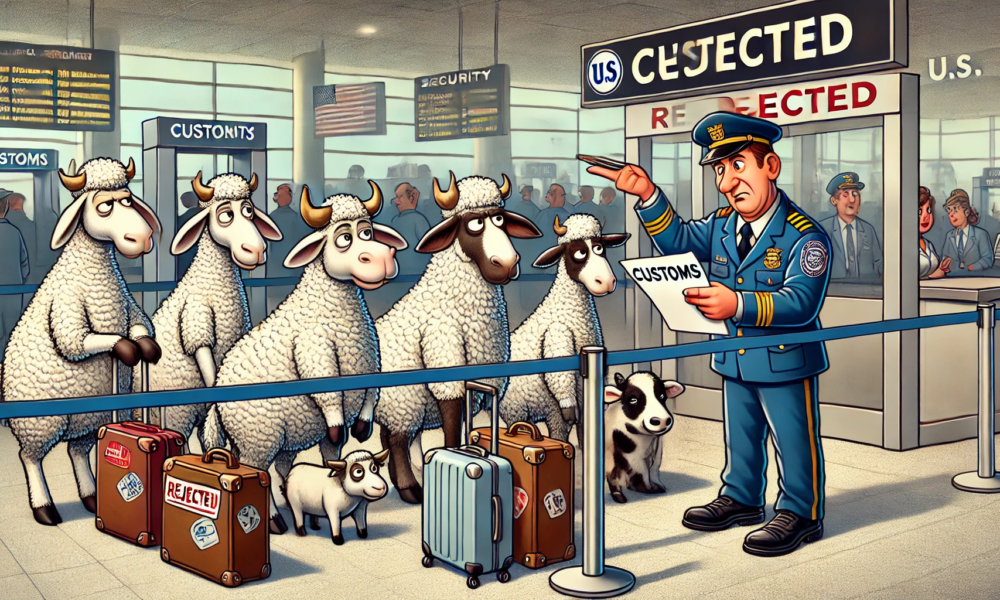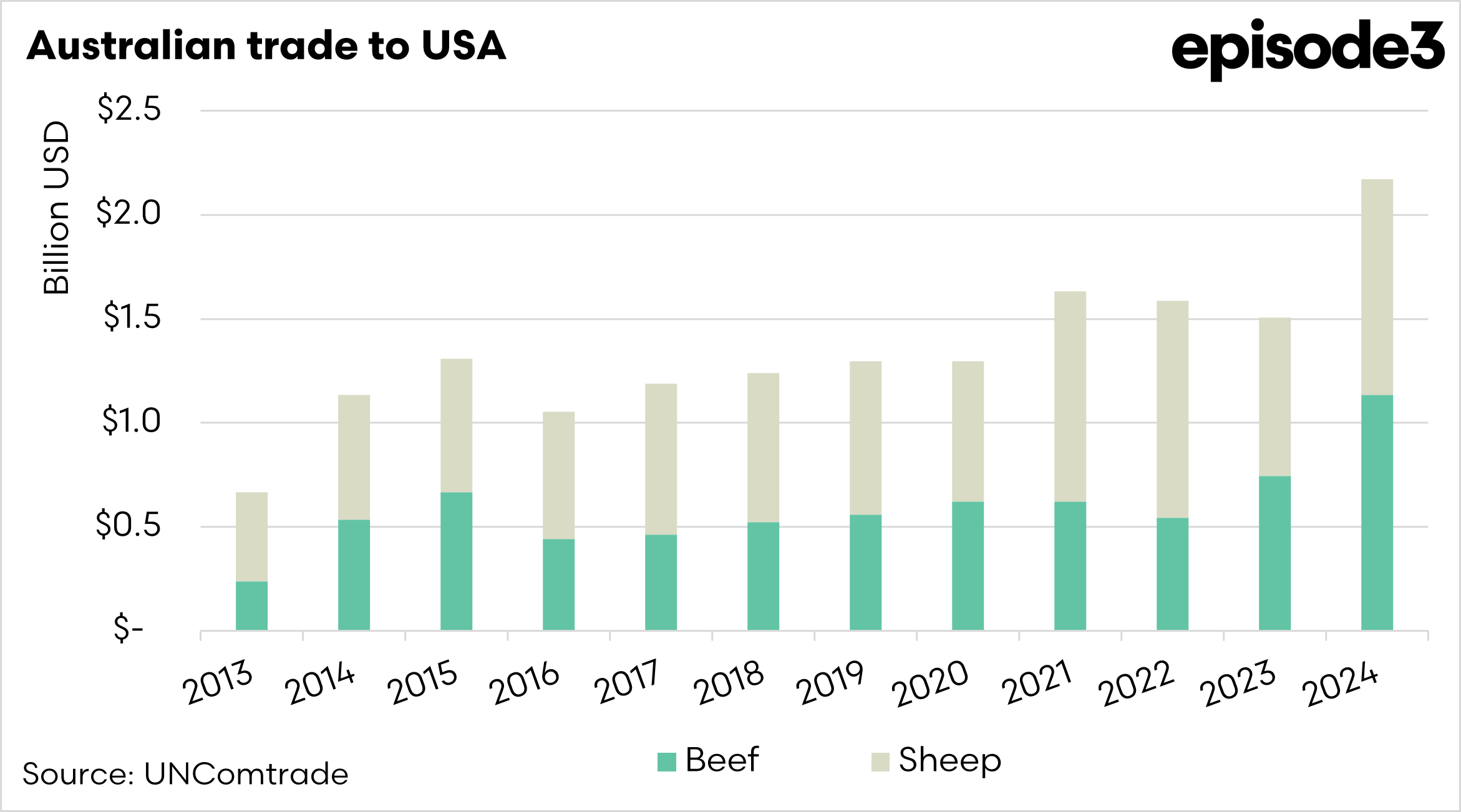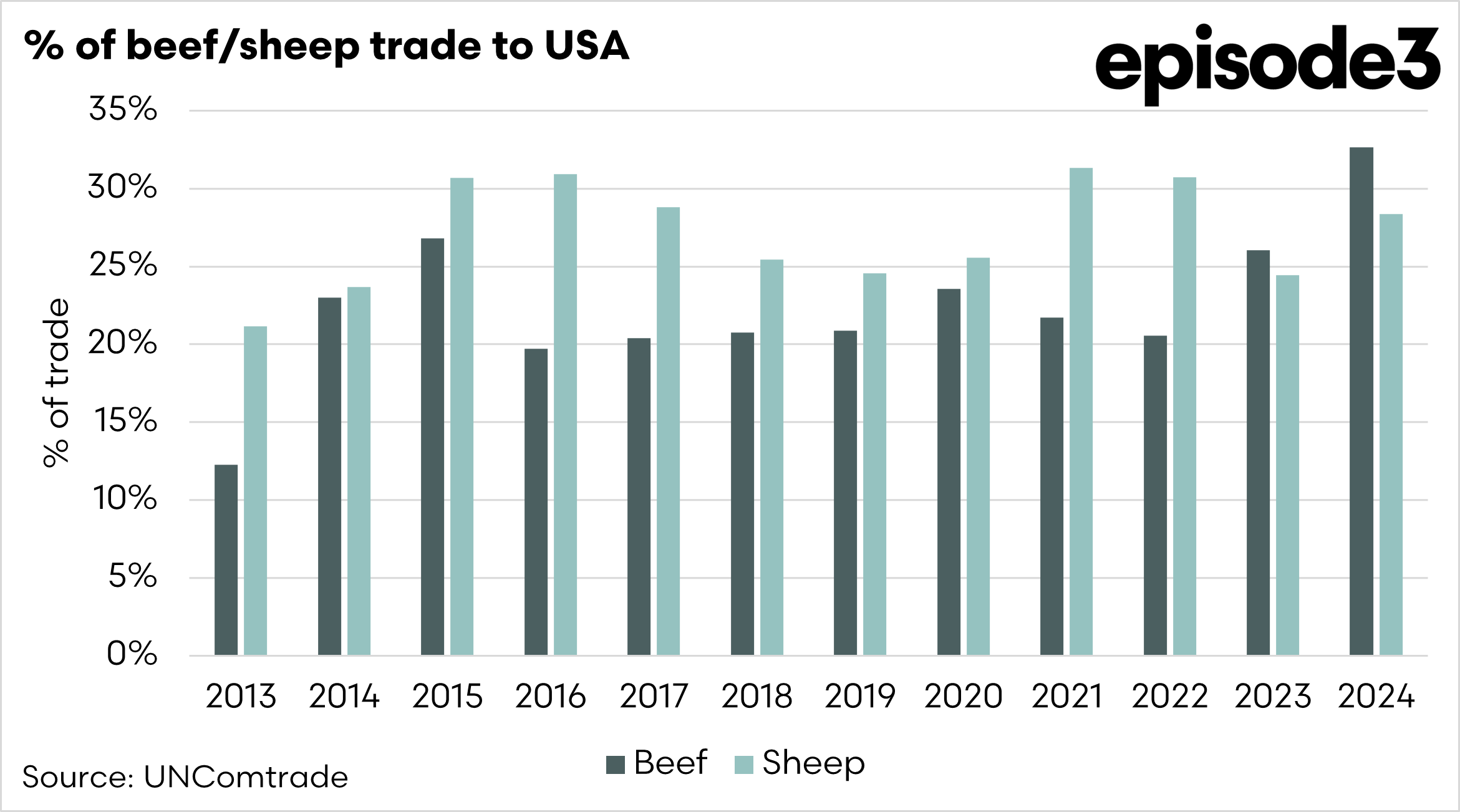Trump trade tactics could hit Aussie red meat

The Snapshot
- Trump has announced on social media that tariffs will be applied to the import of agricultural produce.
- Almost a third of our beef and sheep boxed meat goes to the USA.
- The sheep trade with the US was worth US$1bn and the beef trade US$1.1bn.
- If a tariff of 25% was introduced (matching current Mexico/Canada tariffs), the impact could be close to half a billion US dollars to just the beef and sheep trade.
- The US needs Australian beef and sheep to meet their consumer demand.
- The US will need to either pay the increased tariff or reduce demand.
- We can find other markets, but these may become discounted.
- China is an obvious choice for increased trade, but with its economy struggling, demand might drop.
The Detail
Every morning these days, I wake up and switch my phone on to see what Trump has done overnight.
Last night, there were a lot of announcements, including increased tariffs on China and the announcement that tariffs against Mexico and Canada would start soon. It was this tweet that was of most concern:
On April 2nd, there will be tariffs on agricultural commodities that will be headed to the USA. This move is likely an attempt to help us farmers from China, which is reportedly looking at tariffs on US agricultural commodities.
We expected this would occur, as US farm produce is one of the most significant trades with China, and it hits those who voted for Trump the hardest.
So, let’s take Trump at face value. There will be tariffs on ag imports in less than a month. What will the impact be?
The chart below displays the annual trade with the US in beef and sheep. Last year, a record value of beef and sheep went to the USA at US$2.17bn.
At the moment, all the information we have is from a tweet. Let’s say that the tariff is 25%, matching those announced for Canada and Mexico.
Based on the five-year average trade, a 25% U.S. tariff on Australian beef and sheep meat would cost exporters $415 million annually— US$183M for beef and US$226M for sheep. This could drive up prices, disrupt trade flows, and hit Aussie farmers hard. If we look at the example of sheep live exports, last year, that trade was worth less US$31m, and that has had a big impact, the tariff impacts could feasibly be higher.
But the US is only one country?
The chart above shows the % of our trade (as $) which goes to the USA. Last year in value terms 33% of our beef exports were to the USA, and 28% of our sheep. This is a significant portion of our trade.
Australian red meat trade flows have been heavily reliant on the US, and approximately a third of our red meat boxed flows went there last year.
I thought it was worthwhile putting down some thoughts on what may happen:
- Trade flow changes
- We can find new markets. However, these other markets would be pressured by the influx of products, which could result in lower pricing.
- Finding new markets can lead to being held over a barrel.
- Other countries will be competing with us for new markets.
- Higher US consumer prices
- The US needs our beef and sheep. They cannot supply domestically at the moment. This will increase the cost for the US consumer.
- China
- The tariffs from the US have the possibility of destabilising the global economy, and particularly China. China has been a huge buyer of meat from Australia.
- A decline in their economy could cause their demand to drop.
The introduction of ag tariffs into the US could greatly impact the beef and sheep industry. There might be hope that we can get some form of exception for Australia due to our long-standing relationship with them. I am not exactly sure that will be the case, as he has shown little value in maintaining the long-standing relationships the US has had with other nations.
The US consumer will either have to pay the tariff or reduce their demand for our red meat. If their economy is going into contraction, cost of living pressures may reduce that demand naturally.




